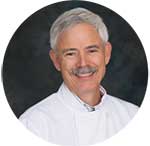Being a travel writer is a fun and adventurous job, where your time is your own to do with as you please. That’s why we get into it, after all. But most of us have either a day job or significant responsibilities beyond travel writing. With that in mind, it’s crucial to use your time wisely so you have a chance to write.
Once you get your travel writing lifestyle up and running, there will be lots of places near and far to visit. You’ll be taking lots of trips, photos, and notes for the stories you’ll write when you get home.

To maintain control of your time, don’t over-promise editors on the number of stories you intend to submit. Most of us work out of home when writing, and as we all know, our homes have a ton of distractions that can cause delays.
If you pace yourself well, your writing will get done, and your life will be in balance. Keeping control of the number of trips your assignments take you on will serve you well. (A nice problem to have, for sure.)
Comped media trips are one of the reasons many of us wanted to become travel writers. Take my recent trip to New Mexico, for the annual International Food, Wine and Travel Writers Association meeting, before all of the pandemic madness took hold. Several stories could have been written from this. I wrote three stories from the four-day trip, and passed on the pre- and post-meeting trips. If I had gone on the extra trips, there would have been at least two more stories to write.
After I returned home, I submitted stories on wines of New Mexico, a fine dining restaurant, and La Fonda On the Plaza—the meeting’s hotel. By only writing three stories, it allowed me to take local trips shortly after arriving home and still have plenty of time to myself.
Writing two or three articles afterward is usually sufficient to appease the host of a media trip But if you find out after you get home you can write an extra story on that fantastic chocolate shop, brewpub, or restaurant you stumbled on to, great! That will make your hosts even happier. The attractions, restaurants, and hotels will be thrilled too.
I love a big trip like the one I took to beautiful Prince Edward Island in Canada for a whole week, but the big trips take lots of time. If you’re lucky enough to live in an area that has numerous media trips within a two- or three-hour drive, then you should take advantage of the ability to embark on numerous short trips.

One of the many lighthouses that dot the Prince Edward Island landscape.
With regional stories, I can drive and don’t have to go to the airport. I can usually find up to 10 media trips per year in the mid-Atlantic, where I live, and suspect places in California, Colorado, Washington State, and other regions have the same number of possible media trips.
Driving to a media trip gives you the chance to stop off at places that will lead to more stories in the future. Think of it like a fun road trip that you get paid to do. Find out if you have a local promotional entity for regional media trips and story ideas in your area. For me, it is the Mid-Atlantic Tourism Public Relations Alliance (MATPRA).
As you gain momentum in your travel writing success story, media trips will get more and more common. Don’t bite off more than you can chew and take more comped trips than you have time to finish the stories that come from such trips. It can be tempting to say yes to every offer of a free trip to an interesting location, but such is the life of a travel writer that we get to be picky about what adventures we embark on. The last thing you want to do is take a media trip and not write enough stories from the free travel, food, attractions, and hotels you experienced.
Only you can determine what the pace of your travel writer’s life should be. If you use your time wisely, you’ll have more fun and produce a higher quality of work that will serve you well.

